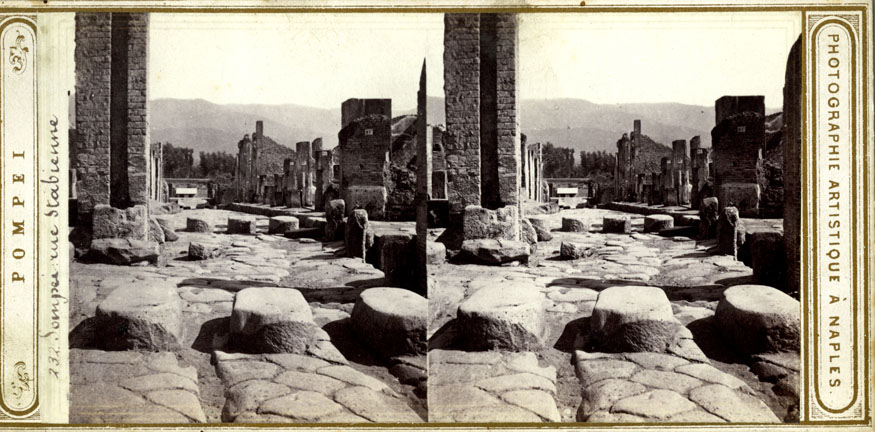Fr : version française / En: english version
mheu, Historical Museum of the Urban Environment
Rue Stabienne in Pompei
anonymous

early 20th century
16cm x 6cm
black & white stereoscopic image on board
© Archives Oonops
View this work in the exhibition The Street
The work
Stereoscopic photography (used to created 3D images) was developed shortly after the invention of photographs, around 1840. The process involves reproducing human vision by taking two shots of the same subject, and moving the view camera around 6.5cm to allow for the space between the two eyes. The two shots are then shown side by side and viewed through a stereoscope, a device that allows each eye to focus on its own image.
The technique was unveiled at the 1851 Universal Exhibition in London, where it captured the imagination of Queen Victoria, who was quick to give her seal of approval. Stereoscopes began selling like hotcakes and were mainly used to show pictures of tourist attractions.
Amateur photographers also began tackling 3D pictures towards the end of the 19th century, with binocular devices on sale to the general public. Stereoscopic imaging remained popular until the Second World War before it finally slipped into obscurity.